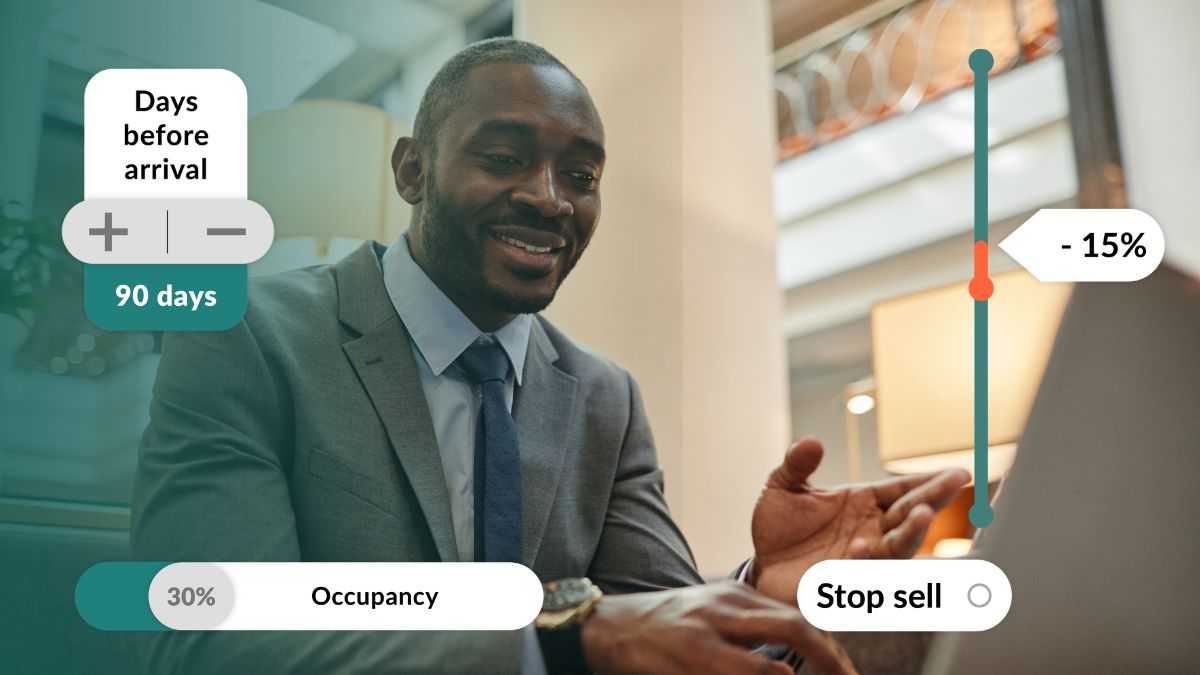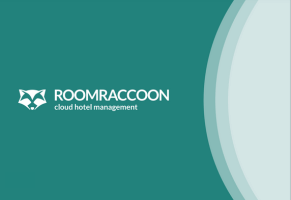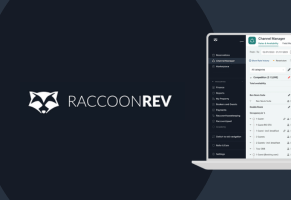CORE PRODUCT
Yield Rule Strategies: What is Yield Management in the Hotel Industry?
August 4, 2023 Nicky. M
Share this post

Yield management for hotels is a pricing strategy that accurately forecasts demand and increases revenue. Current and future trends and opportunities in the hotel industry are like a gold mine for hoteliers, allowing them to ride the wave of demand.
Numerous factors play a significant role in the sudden surge in hotel room demand. For example, during Taylor Swift’s Eras tour, hotel occupancy rates in Chicago soared to nearly 97%. Similarly, the exceptionally high summer temperatures in Europe are causing travellers to postpone their holidays for milder weather conditions.
Let’s dive into the world of yield management—what it is, why it’s important, how to calculate the formula, examples of yield strategies, and why using pricing software is a smart move to handle price optimisations effectively.
What is Yield Management for Hotels?
Yield management is a dynamic pricing strategy used by hotels to maximise revenue. Given that hotels have a limited supply of rooms available for a specific time frame, it becomes crucial to maximise the revenue generated from each room sold.
The primary goal of yield management is to strategically sell hotel rooms at the optimal time and price to maximise revenue without overcharging or scaring away potential guests. It’s like finding the sweet spot for pricing to keep the hotelier and the guests happy.
Yield management entails optimizing revenue by considering both occupancy and selling price. The core of this pricing strategy lies in determining the most effective room selling price, which is influenced by factors such as demand, time of year, the number of rooms already booked, and other external variables.
Why is Yield Management Important in the Hospitality Industry?
Yield management is considered the most important strategy for increasing revenue and forecasting demand in the hospitality industry. It uses data and industry trends to forecast demand and accurately price hotel rooms.
Revenue managers who practice demand forecasting techniques can potentially achieve higher revenue even when the hotel’s occupancy is at 80% compared to when it is at 100%.
Although it may be surprising to some, the truth is that higher occupancy doesn’t always guarantee more revenue. However, by implementing a yield management strategy with a dynamic pricing approach, hoteliers can stay ahead and maximize their revenue effectively.
How to Calculate the Yield Management Formula?
Revenue management metrics unlock valuable insights into your hotel’s performance and offer opportunities to fine-tune your strategy, leading to a boost in revenue without the need to ramp up sales.
The yield management formula is one of the most widely used formulas in the hospitality industry. Calculating this formula establishes a baseline metric for how well your hotel is performing.
The formula can be calculated as follows:
Yield = Revenue achieved / maximum potential revenue x 100
Practical example
The Marilyn Hotel in London has 35 rooms and an average daily rate (ADR) of £475 in high season. This means that the hotel’s total potential revenue is £16,625 per day. If the hotel only sells 25 rooms one night for a total of £11,875, its yield would be 71%. This is calculated by dividing the revenue achieved (£11,875) by the maximum potential revenue (£16,625) x 100.
Measuring your yield percentage is essential, but don’t forget to consider all the surrounding factors that might affect it.
5 Factors That Influence Hotel Room Demand
Knowing what factors influence hotel room demand helps you prepare in advance and adjust your prices accordingly. When demand is high, why not take advantage of it by increasing your prices? And when demand is low, you can still stay competitive by offering promotions.
Consider the following demand factors:
1) Time of year and seasonality
The time of year and seasonality will always be the most important factors in determining demand. However, defining the seasons has become more difficult in recent years as travel patterns have changed. According to the RoomRaccoon Hospitality Report 2022, the peak seasons for travel extended, starting earlier and ending later in the year.
This is likely due to a number of factors, including rising inflation and unprecedented heat waves in tourist regions of France, Spain, Portugal, Italy, and Greece. This trend will likely continue in the future, with even more people taking holidays outside the traditional peak season.
2) Market trends and events
Trends in hospitality and travel are constantly evolving. Some recent popular trends include eco-conscious travellers looking for a stay with a low carbon footprint, guests seeking more local experiences and packages, and “bleisure” travellers book longer stays at hotels or hostels that can accommodate a working-holiday lifestyle.
Events are often short-lived, but they can be a major source of revenue for hotels that plan well in advance. Hotels can maximize their occupancy rates and charge higher room rates by keeping track of upcoming events in their area, such as concerts and conventions.
3) Guest profiles and purpose of stay
Understanding the kind of guests your property attracts is essential for a yield management pricing strategy. For instance, if your hotel or destination caters to corporate guests, seasonality may not be as important as factors like inflation and shorter booking lead times of 15 days on average. International guests travel longer distances, tend to save up more money, and book longer stays. They are also more likely to spend money on additional services, which can have a positive impact on your revenue per booking.
4) The availability of other accommodations
Travellers are always looking for the best value for their money. That’s why it’s important to compare your hotel’s prices and amenities to those of your competitors on the same night. You should also take into account other data in your competitive set (CompSet), such as competitor availability. The fewer options available, the more you can raise your prices.
5) Historical performance data
Historical performance data helps hoteliers identify periods of high demand and adjust the pricing accordingly to maximise revenue during peak times and offer competitive rates during low-demand periods. For example, if a hotel notices that it is getting more bookings from families during the summer, it can adjust its marketing to target families with family-friendly rates and packages. Learn more about hotel performance reporting.
Why Should You Use Yield Management Software?
It is practically impossible to manually monitor and adjust rates in response to various demand factors. As a result, many hoteliers make the mistake of selling time-limited hotel rooms at fixed prices, leaving money on the table.
Software is key to automating processes, streamlining operations, and implementing more scalable procedures. Hoteliers can easily implement a dynamic pricing strategy using software like the RoomRaccoon Yield Manager.
How it works
Simply set up yield rules with specific parameters (discount/increase, booking lead time, timeframe, occupancy level, room categories, and other criteria). The software will automatically optimise your rates by following the rules, ensuring you always capitalise on market demand.
The tool is flexible and allows you to expand your existing revenue streams by implementing a smart pricing strategy on your website via your booking engine and by being competitive on external booking channels.
Read all about how The Glen Boutique Hotel improved revenue with the RoomRaccoon Yield Manager.
What Are Some Examples of Yield Management Strategies in the Hotel Industry?
RoomRaccoon’s pre-set yield rules will help you maximise revenue. These rules are based on common market demand scenarios and can be activated with a single click. If you need more customisation, you can create custom yield rules with your preferred parameters.
Here are five yield management rule examples to incorporate into your strategy:
1) Last-minute availability
Do you have a few rooms left unsold? Offer discounts on your remaining inventory to sell it out quickly rather than letting it go to waste. This is an excellent way to attract late bookers who are looking for a good deal. You can set a yield rule to offer a 20% discount 0-2 days prior to arrival if your occupancy is between 80% and 99%.
2) Early-bird deals
The most effective way to combat shorter booking lead times is to promote early-bird rates and packages so that travellers are aware of it and can book in advance. You can set a long-term rule and offer a 20% discount 5 months before check-in if your occupancy is lower than 30%. This is because you want to retain and discount only a little, but also that far in advance, most independent hotels will not likely be between 60-80% occupied.
3) Unforeseen high demand
Rooms are booking up fast? Ensure you don’t miss out on any opportunities to increase your revenue during unexpected events that cause a spike in demand for hotel rooms. You can set a rule to increase your rates by 10%-30% if your occupancy is between 80% and 99%.
4) Mid-term demand
Hotels can also run a middle-ground yield rule. This captures the period between low and high demand. But it depends on the booking trend during this time within the hotel. If the trend shows that bookings made 2-3 months in advance typically have an occupancy rate of 40% to 55%, you could offer a 10% discount during this timeframe. This works well in conjunction with the early-bird offer, which provides a larger discount for those who book even earlier (+5 months).
5) Competitor availability
Are your competitors sold out of specific room categories? Don’t sleep on this opportunity! You can set a competitive-yield rule to increase rates for similar room categories. You can also set a rule to raise your prices when your competitors do the same, keeping your competitive edge.
What are the Benefits of Yield Management for Hotels?
1) Improved bottom line
Hotelier’s primary goal is generating revenue and finding new ways to do so. Yield management helps hotels increase revenue without having to reach 100% occupancy. In essence, it comes down to supply and demand. People are willing to spend more when demand is high. At the same time, they are willing to spend during the off-season for the right price. That’s when discounts and special packages come in handy.
2) Eliminate pricing errors
Hotels have annual revenue targets. Reaching these targets is a lot harder and sometimes impossible by relying solely on expected booking patterns. As demand forecasting becomes increasingly accurate, revenue managers can execute dynamic pricing strategies with yield management software. This way, you’ll meet and exceed your revenue targets.
3) No more lost opportunities
While yield management in the hotel industry has a strong focus on supply and demand, it’s important to look at upcoming events and historical data to prepare for lucrative opportunities in advance. For example, you can already plan room prices for public holidays and events. And with hotel tools like an integrated channel manager, your yield rates will automatically adjust across all booking channels without needing to lift a finger.
Wrapping up
A yield management strategy does not have to be complex. Sometimes, implementing just one yield rule can make a difference to your bottom line. And when you are comfortable, you can experiment with more rules to manage your yield more effectively. Request a free demo today to discover how hotel management software can benefit your independent hotel.
Frequently Asked Questions
What are the differences between Yield Management and Revenue Management?
Yield management is a revenue management strategy that focuses on maximizing revenue by adjusting prices based on demand. The main goal is to sell the right product to the right customer at the right time and price to optimise overall revenue.
Revenue management is a more comprehensive approach that includes a variety of strategies to maximize overall revenue for a hotel business. While it also involves managing capacity and pricing, revenue management may include other factors such as marketing, distribution channel management, and demand forecasting in order to achieve the best financial results.
Follow us
Nicky. M
Nicky is RoomRaccoon's Senior Content Manager, combining a love for travel with a practical approach to improving hotel performance through tech and insightful tips. Join her journey where travel, hospitality, and technology meet.
Related Posts
Subscribe to our newsletter for more on the latest hospitality & RoomRaccoon updates delivered straight to your inbox!












